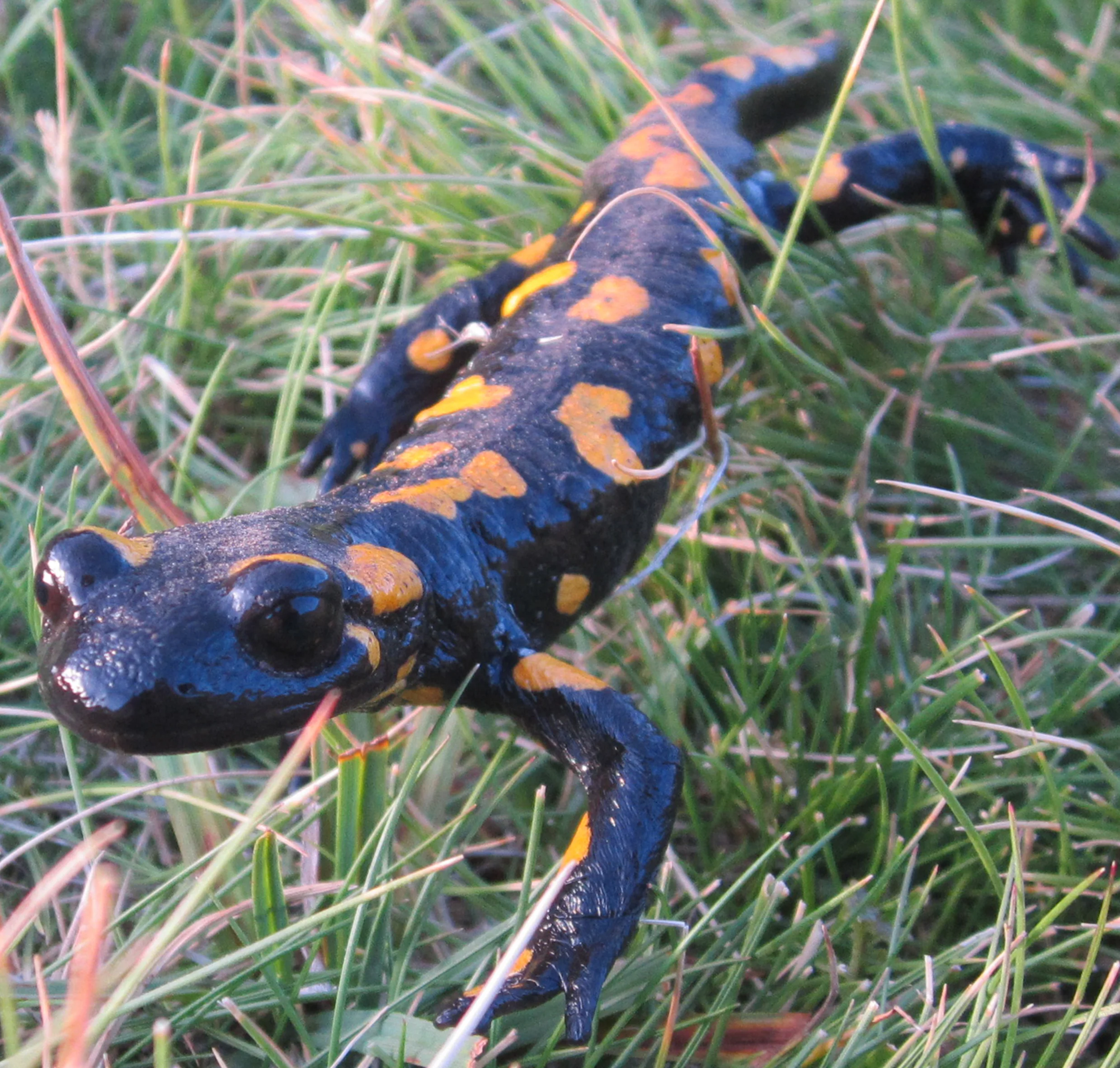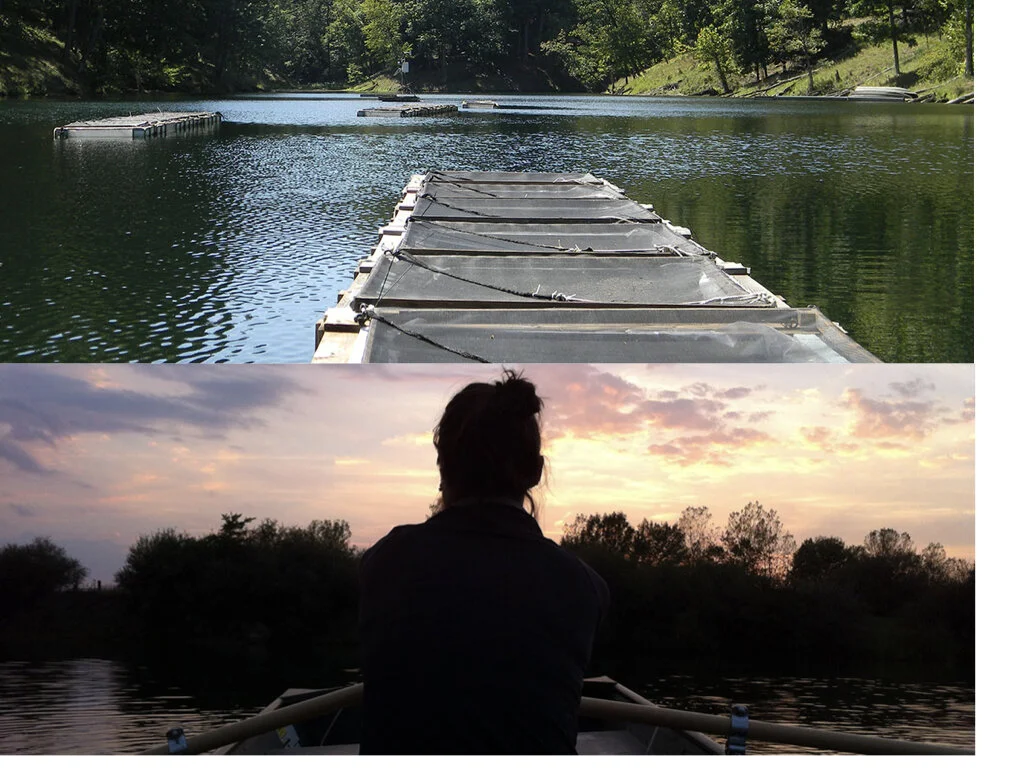The fire salamander (Salamandra salamandra). Our work with the amphibian chytrid, Batrachochytrium dendrobatidis, indicates that the effects of host demographic structure overwhelm the negative effects of ultraviolet radiation (UV)1.
My collaborators and I showed experimentally that UV kills the parasite in the environment. However, field surveys revealed that disease is actually more common in sites with higher UV levels because these sites harbor key life stages of the host — older and larger stages, which produce higher levels of parasitic zoospores. These life-stages overwhelm the negative effects of UV. Thus, overemphasis on the environmental constraint (UV) could misinform management decisions. These findings caution that disease mitigation programs must consider links between habitat, host-stage structure, and disease.
Sex- and stage-specific virulence shape host stability, demography & disease dynamics
Epidemiology has long recognized that parasites often exhibit age- and sex-specific patterns of disease. Well-known examples include human diseases with age-dependent mortality risk (e.g., measles), but these patterns also occur in numerous wildlife and plant diseases. Stage-specific virulence may have important “down-stream” consequences for populations and communities. For instance, a striking example is the chestnut blight that decimated American forests in the early 1900s, when higher virulence on adult chestnuts left behind more resistant juvenile chestnuts, shifting remnant chestnut stands to juvenile-only populations. Similar patterns may also contribute to the pronounced shifts in the stage structure of feral cats and Eurasian badgers.
Classical theoretical approaches, however, have largely focused on homogenous host populations. Hence, we lack a fundamental understanding of how these important sources of host heterogeneity affect disease dynamics (and vice versa).
Our research demonstrates that focusing on links between parasites, host stage-structure (juveniles/adults, males/females) yields important new insights into eco-epidemiology with applications for disease management.
Why individual-level variation matters
Using the zooplankton Daphnia dentifera and its fungal (yeast) parasite Metschnikowia bicuspidata, my collaborators and I combined longitudinal field surveys and multiple experiments (e.g., creating experimental epidemics in lab and field-based mesocosms) to parameterize epidemiological models that accounted for stage-specific variation in key epidemiological traits that govern infection.
Our results reveal that canonical models often fail to accurately predict population-level dynamics because they overlook within-host variation (e.g., size, stage, genotype, reproductive mode); complex feedbacks between individual traits and population dynamics influence epidemiological outcomes.
COLLABORATORS
Dr. Spencer Hall (Indiana University)
Dr. Jaime Bosch (Museum of Natural History, Madrid Spain)
Dr. Daniel Medina (Universidad Complutense, Madrid Spain)
Dr. André de Roos (University of Amsterdam)
Associated Publications
Hite J.L. R. M. Penczykowski, M. S. Shocket, K. Griebel*, A.T. Strauss, M. A. Duffy, C. E. Cáceres, and S.R. Hall. 2017. Allocation, not male resistance, increases male frequency during epidemics: a case study in facultatively-sexual hosts. Ecology. 98(11), 2773-2783. pdf
Hite J.L., R. M. Penczykowski, M. S. Shocket, A.T. Strauss, M. A. Duffy, C. E. Cáceres, and S.R. Hall. 2016. Parasites destabilize host populations by shifting stage-structured interactions. Ecology 97: 439-449. pdf
Hite, J.L., S. Fernández-Beaskoetxea, D.C. Medina, J. Bosch, and S.R. Hall. 2016. Joint effects of habitat, predators, host stage structure, and diversity on amphibian chytrid. Proc. Roy. Soc. London B. 283. pdf
In prep
Orlando, P.A., Hite. J.L., and Spencer R. Hall. Disease as a cause of cohort cycles: theory for disease in a physiologically structured host population. In revision
Orlando, P.A., Hite. J.L.. Stage structure increases opportunities for fluctuation-dependent coexistence. In revision
Hite J.L., R. M. Penczykowski, D. J. Civitello, M. S. Shocket, A. T. Strauss, M. A. Duffy, C. E. Cáceres, and S. R. Hall. Parasite-mediated changes to host feeding ecology and stage-structure shape host demography. In revision


